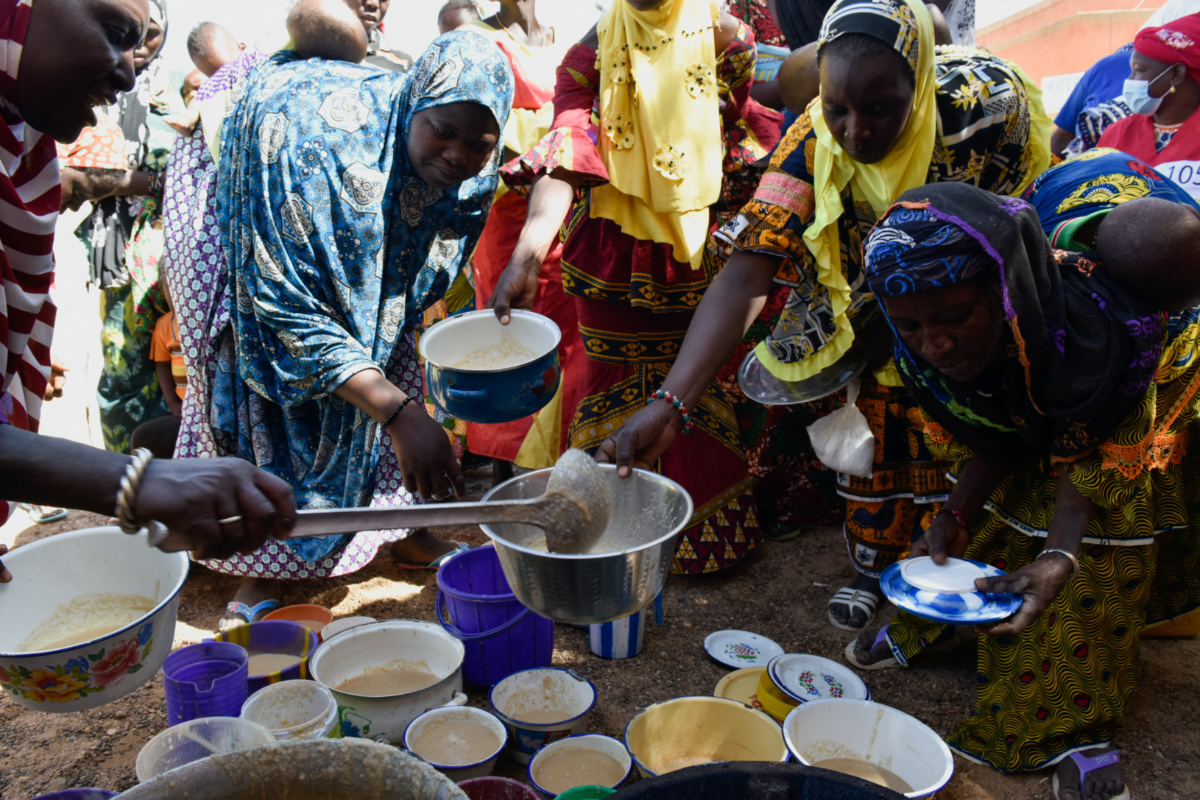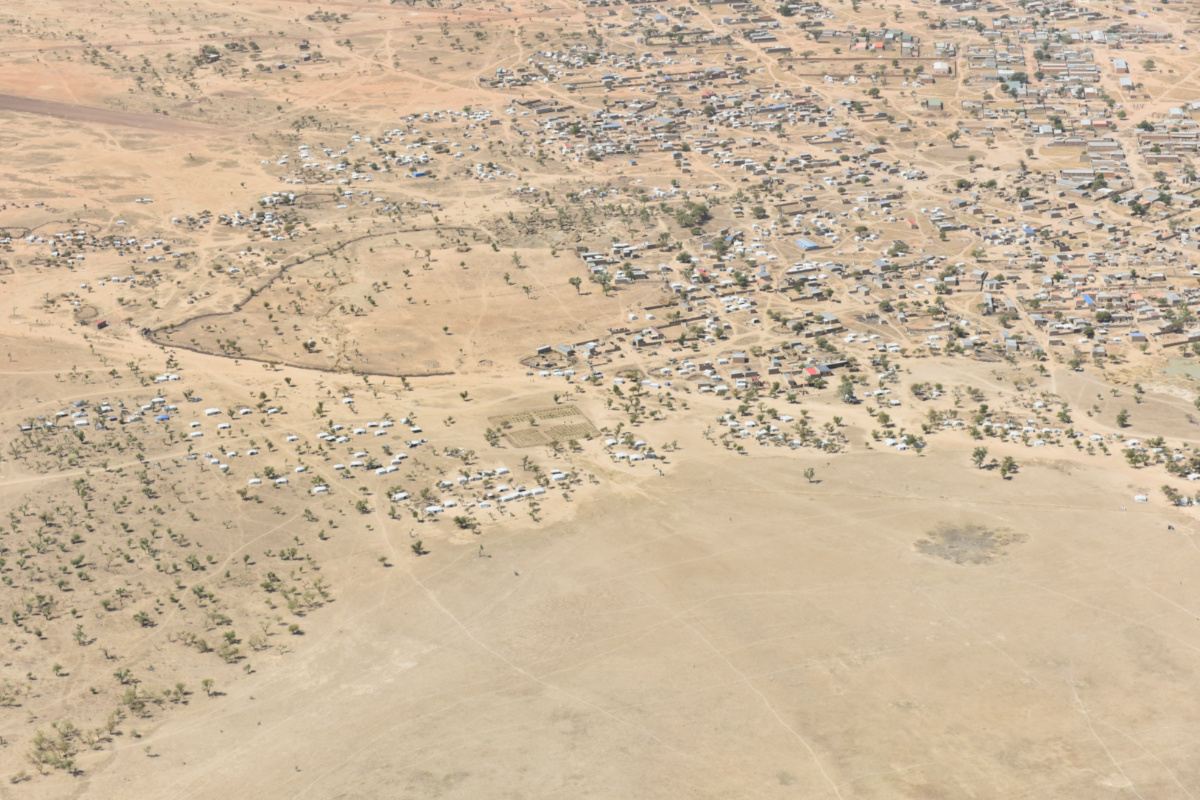Dori, Burkina Faso
Reuters
Suspended from scales in a bucket, nine-month-old Sakinatou Amadou gripped the sides of her makeshift container as a nurse at a small clinic in northern Burkina Faso checked on her recovery from malnutrition.
Sakinatou’s mother is dead and she is being raised in Dori, a trading hub near the Niger border, by her grandmother, whose family of 14 have struggled to support themselves since they fled their village in 2019.

Women receive porridge from the Red Cross during a porridge preparation learning program, as part of efforts to fight malnutrition at the Medical Center’s maternity ward in Dori, Burkina Faso, on 24th November. PICTURE: Reuters/Anne Mimault.
They are among more than two million people across Burkina Faso, Mali and Niger who have been forced from their homes by a wave of attacks on rural communities by Islamist groups.
With crop yields further compromised by erratic rainfall, some 5.5 million in the three countries on the edge of the Sahara are facing food shortages, a figure the UN estimates could rise to 8.2 million by August, when food is most scarce before the harvest.
“People have lost animals, fields and sometimes crops. They have lost everything,” said doctor Alphonse Gnoumou, who runs the health centre in Dori that has helped Sakinatou to gain weight.
The town’s once bustling livestock market has shut down due to the violence. Transporting food in the area is dangerous and prices have skyrocketed, said Kadidiatou Ba, who sells vegetables and dried goods from a roadside shack.
“Everything has gone up. We used to pay 40,000 CFA francs ($US68) for a sack of beans, now we’re at 75,000,” she said as she waited for customers.

Internally displaced persons’ tents are seen from the helicopter, on the outskirts of Dori, Burkina Faso, on 26th November. PICTURE: Reuters/Anne Mimault.
Meanwhile Dori’s population has nearly tripled in two years to 71,000 and the influx of displaced people threatens to overwhelm meagre local services.
Three or four children cram behind each desk at a local school, which aims to feed each pupil a bowl of rice and beans so they can have at least one square meal per day.
“These were very traumatised kids. When they first came with their parents, we saw an indescribable sadness in them,” said head teacher Bokum Abdalaye, as children played in the schoolyard behind him.
“When they see they have a midday meal that they can share with the others, that helps them settle in.”






